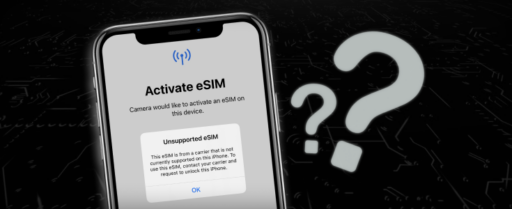Staying connected during a flight has become a priority for many travelers. Whether you need to check emails, stream your favorite shows, or just keep in touch with friends and family, having reliable Wi-Fi on a flight can make all the difference. This guide’ll explore how to stay connected on your flight through airplane Wi-Fi and ensure you’re never out of touch, even at 35,000 feet.
Pre-Flight Preparation
Before you even step onto the plane, you can do a few things to ensure a smooth connection process. Start by checking if your airline offers in-flight Wi-Fi. Many airlines now provide this service, but confirming before your journey is always good. Some airlines offer free Wi-Fi, while others might charge a fee, so knowing what to expect can help you prepare.
Next, make sure your devices are ready. Download any necessary apps that your airline’s Wi-Fi service might require. Some airlines, like Delta and Southwest, have dedicated apps for in-flight entertainment and internet access. Ensure your device is fully charged, as in-flight charging options can be limited, and you don’t want to run out of battery mid-flight.
How Airplane Wi-Fi Works
Airplane Wi-Fi works through several methods, including satellite and ground-based connections, ensuring you stay connected at cruising altitude.
- Aircraft Antenna: Located on top of the plane, this antenna links with ground towers or satellites to send and receive data.
- Satellite-Based Wi-Fi: The antenna connects to satellites in orbit, which relay your data between the plane and ground stations, keeping you online even over oceans.
- Air-to-Ground Wi-Fi: Here, the antenna connects to cellular towers on the ground. As the plane moves, it switches between towers, similar to how your phone connects to cell networks.
- On-board Hardware: Inside the plane, routers and access points create a Wi-Fi network for passengers, just like at home.
- Passenger Devices: Connect your Wi-Fi-enabled devices to the plane’s network to browse the web, check emails, or stream content during your flight.
Connecting to In-Flight Wi-Fi
It’s time to get connected once you’re on the plane and the seatbelt sign is off. Here’s how to stay connected on your flight:
- Enable Airplane Mode: Start by switching your device to airplane mode. This disables cellular data, which is required by law during flights. However, you can still enable Wi-Fi after turning on airplane mode.
- Connect to the Airline’s Wi-Fi Network: Open your device’s Wi-Fi settings and look for the airline’s Wi-Fi network. The network name is usually displayed in the in-flight magazine or announced by the flight crew.
- Open the Airline’s Wi-Fi Portal: After connecting to the network, open your web browser. You’ll be automatically redirected to the airline’s Wi-Fi portal. If not, you can manually enter the portal’s URL, usually provided by the airline.
- Select Your Wi-Fi Plan: Most airlines offer various Wi-Fi plans, ranging from free messaging services to full internet access. Choose the plan that best suits your needs. If you plan to stream videos or work online, consider purchasing a premium package.
- Log In and Enjoy: After selecting your plan, log in with your account details or purchase a pass. Once connected, you can start browsing the internet, checking emails, or even video calling your friends and family.
Maximizing Your In-Flight Wi-Fi Experience
To make the most of your in-flight Wi-Fi, it’s essential to manage your data usage efficiently. Streaming high-definition videos or downloading large files can quickly consume your data allowance, leading to a slower connection. Instead, consider downloading movies, shows, or podcasts before your flight. Many streaming services, like Netflix or Spotify, allow you to download content for offline use.
Another tip for how to stay connected on your flight is to keep your browsing light. Stick to essential tasks like checking emails or reading articles. Avoid data-heavy activities that could slow down your connection.
Instant Connectivity with Driffle eSIM
Once you’ve landed, staying connected is just as crucial, especially if you’re traveling internationally. This is where Driffle eSIM comes in handy.
- Seamless and Instant Connectivity: Driffle eSIM provides immediate online access without needing a physical SIM card. Stay connected as soon as you land, especially on international trips.
- No Local SIM Hassles: Skip the search for a local SIM card and avoid expensive roaming charges. Driffle eSIM lets you activate your connection instantly upon arrival.
- Effortless Connectivity: Whether you’re navigating unfamiliar streets, booking a ride, or checking in with loved ones, Driffle eSIM ensures smooth, continuous online access.
- Flexible Data Plans: Choose from data plans tailored to your travel needs, whether it’s a short business trip or an extended vacation.
- High-Speed Internet: Enjoy uninterrupted, high-speed internet with Driffle eSIM, which is perfect for uploading travel photos or streaming music while exploring new destinations.
Summary
In-flight Wi-Fi has become a game-changer for staying connected while traveling. By preparing ahead of time and knowing how to stay connected on your flight, you can enjoy a smooth and stress-free internet experience. And with Driffle eSIM, your connectivity doesn’t have to end when the plane lands. Stay online and stay connected, no matter where your travels take you.
So, the next time you’re planning a trip, remember these tips for how to stay connected on your flight, and ensure you’re always just a click away from the world.
Find out more about Driffle eSIM and affordable plans here. They’re worth it!



